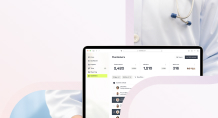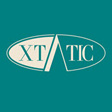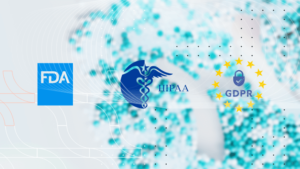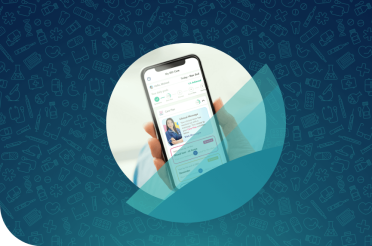Technology is transforming patient-provider interactions, and electronic informed consent (eIC) software is a key development in this area. This software streamlines the traditional consent process to make it more efficient, accessible, and secure for both patients and healthcare professionals.
This article will explore the importance of eIC in healthcare, its legal framework, the benefits and challenges of implementation, and emerging trends shaping its future. Understanding these aspects will show how eIC enhances patient autonomy, engagement, and safety.
What Is Electronic Informed Consent (eIC)
Informed consent is a fundamental principle of healthcare. It ensures that individuals understand the risks, benefits, and options before agreeing to medical treatments, clinical trials, or procedures. In the past, this process relied on paper forms, which were often difficult for patients to understand, access, and complete.
Electronic Informed Consent (eIC) is a digital method used to explain and get approval from people joining clinical trials. It uses devices like tablets or online platforms to share information clearly, make sure participants understand, and securely record their agreement. This method makes the process easier and more efficient.
Electronic informed consent (eIC) has emerged as a modern alternative, thanks to advances in healthcare technology. eIC provides digital platforms that deliver essential information about risks, benefits, and treatment options in a more dynamic and engaging way for patients.
Multimedia, such as audio, video, and animation, is often used to enhance understanding. This approach is especially useful for individuals with varying health literacy levels and learning styles since it allows for more personalized and clear explanations.
Along with improving patient comprehension, eIC’s flexible and accessible process helps healthcare professionals maintain a clear audit trail. This ensures that each step of the consent process is documented and complies with legal requirements.
Benefits of implementing eIC software
The slow adoption of eConsent is understandable, as healthcare professionals have long relied on paper-based interactions with patients. Many are hesitant to change these familiar processes, accustomed to paper forms, handwritten prescriptions, and printed care instructions. However, the benefits of eConsent in clinical trials far outweigh any short-term disruptions to established practices at clinical sites.
Electronic informed consent (eIC) software simplifies complex consent processes while enhancing participant understanding and engagement. It also boosts accuracy and efficiency by reducing paperwork for clinical staff. Additionally, it provides sponsors with real-time consent data, improving study management and ensuring regulatory compliance.
There are some other benefits of incorporating eIC in health care that we need to mention:
- Streamlined participant experience: eIC establishes a consistent procedure to handle and obtain informed consent from the outset, establishing a professional and effective tone. Participants like its convenience and sophistication since they are used to interacting with technology in both their personal and professional life.
- Improved patient understanding and involvement: eIC makes complex protocols easier to understand by employing multimedia to convey trial material, such as electronic glossaries and movies. It improves comprehension and engagement by enabling participants—including those who might have trouble reading—to comprehend the material more fully and have convenient family discussions about it.
- Increased compliance and decreased protocol deviations: eIC assists patients in reducing protocol deviations, which are frequently brought on by inaccurate or incomplete consent forms. Consent data is securely stored and the process is automated, guaranteeing compliance right away. According to studies, eIC lowers consent-related deviations from 14% to 6%, increasing the effectiveness and economy of trials. (1)
- Enhanced remote participation: By enabling participants, legal guardians, or representatives to remotely examine and sign permission forms, eIC promotes decentralized and hybrid trials. Because participants can give their consent without having to attend trial locations, this flexibility helps with both participant recruitment and retention.
- Effective clinical site management: By producing prompt notifications and calls to action, eIC simplifies the tracking of consents and protocol revisions for site staff overseeing numerous studies. This guarantees improved coordination in the management of trial participants and lessens the administrative load.
These strategies empower patients as decision-makers by providing relevant information about treatment options and potential risks during the informed consent process. This approach fosters collaborative decision-making and enhances their overall experience in healthcare practice.
Challenges of using electronic informed consent in healthcare
Using eIC software offers major benefits but also presents some challenges. A key issue is ensuring that all patients, regardless of their digital literacy, can fully understand and complete the consent process.
Both risks and benefits must be considered. Healthcare providers also face technological challenges, such as integrating eIC with existing systems and maintaining a secure audit trail to comply with data privacy regulations.
Some specific challenges when implementing eIC software can include:
- Ease of use and integration: A major challenge in adopting eIC solutions is finding one that is easy for site staff to use and integrates smoothly into the clinical trial process. If the software is difficult to use or disrupts daily workflows, staff may become frustrated and stop using it. To ensure successful adoption, the eIC platform must work with existing systems and procedures.
- User experience and adoption resistance: The platform should be simple and efficient for both patients and healthcare providers. If the eIC solution is confusing, patients may struggle to complete the consent process, leading to delays. Similarly, healthcare staff may resist adopting new technology if it complicates their tasks or requires extensive training.
- Vendor support and customization: A strong support network from the eIC vendor is also important for successful deployment. The software should offer customization options to fit specific trial procedures and meet the needs of both patients and site staff. A dedicated help desk and global support team are also crucial for quickly resolving issues, minimizing downtime, and providing ongoing training.
- Initial resistance and hesitation: Healthcare providers often hesitate to adopt new technology, especially if they are accustomed to traditional paper-based systems. To overcome this resistance, it’s important to clearly communicate the benefits of eIC, such as improved efficiency and patient engagement. Offering incentives, encouragement, and recognition for early adopters can ease the transition and motivate staff to embrace the technology.
- Technical infrastructure and training requirements: In resource-limited settings, upgrading the technical infrastructure of clinical facilities may be necessary to implement eIC systems. It’s crucial to provide sufficient training for staff and medical students on both the technical aspects of the system and how it integrates into clinical workflows. Without proper training or familiarity, errors or underuse may occur, reducing the potential benefits of eIC software.
- Digital literacy and patient accessibility: While eIC systems can boost patient engagement, they require a basic level of digital literacy from participants. Some patients, especially older adults or those in remote areas with limited internet access, may struggle with the technology. To address this, specialists and site staff should offer extra support, such as training participants on how to use the new informed consent form. In emergencies where digital tools are unavailable, alternative methods for obtaining consent should also be provided.
- Data privacy and security issues: Protecting sensitive patient data is essential in any digital healthcare platform. eIC systems must comply with data protection laws, such as GDPR in Europe and HIPAA in the United States. Failing to safeguard patient privacy can lead to legal consequences and undermine trust in healthcare providers. To address this, eIC systems should ensure strong encryption, secure data storage, and strict access controls.
Successful deployment of electronic informed consent in healthcare requires careful planning, strong support, and thorough training. The next sections will cover regulatory considerations in more detail.
Regulatory considerations for eIC in healthcare
The Health Insurance Portability and Accountability Act (HIPAA) is a federal law that governs the use, security, and sharing of protected health information (PHI). Its Privacy Rule ensures healthcare providers protect patient data while delivering quality care.
To comply with HIPAA, healthcare organizations need efficient systems, and e-consent software can assist with this. E-consent software streamlines consent processes, protects patient autonomy and confidentiality, and ensures legal compliance. It also automates administrative tasks, reduces the risk of data breaches, and saves both time and money.
Key regulatory aspects of eIC software include:
- Protecting patient privacy and autonomy with HIPAA-compliant forms and signed business associate agreements (BAAs)
- Streamlining the consent process with clear instructions and secure document access
- Reducing the risk of data breaches by safeguarding PHI
- Automating administrative tasks to save time and money
- Ensuring full compliance with data privacy regulations
The U.S. Food and Drug Administration (FDA) also has guidelines for using eIC in clinical studies that follow traditional consent standards. According to these guidelines, eIC platforms must offer clear, understandable information, just like paper forms, to help patients make informed decisions.
Global laws, like the EU’s General Data Protection Regulation (GDPR), set strict rules for handling and storing patient data, which also apply to eIC platforms. These regulations require top-level security for personal and health data, giving patients control over their information and ensuring the informed consent process is transparent, honest, and compliant.
Sponsors of international trials must ensure that the eIC systems they use comply with local laws in each jurisdiction where the trial is conducted. This may involve modifying consent forms to meet local regulations or specific needs, such as including a qualified proxy to obtain consent for participants unable to give it themselves.
Discover how we can help outsource Healthcare projects efficiently Speak to an expert today, and see how our on-demand IT talent and augmented teams can efficiently deliver value at every step of your roadmap.

User experience and patient engagement with eIC
Electronic informed consent (eIC) software improves the consent process by making it more accessible and engaging for patients. Multimedia tools like videos, animations, and audio simplify complex medical information and proposed treatments.
These tools break down complicated content so that patients with different literacy levels, including those with limited health literacy, can understand the information. This approach boosts comprehension and can better engage patients, making them more confident in their decisions.
Another important advancement of eIC systems is their flexibility. Patients can review consent documents at their own pace, in the comfort of their homes, instead of feeling rushed in a clinical setting. With mobile accessibility, they can access the consent process on their devices, discuss it with family members, or seek advice from caregivers if needed.
This ease of use helps respect patient autonomy and encourages collaboration between patients and healthcare professionals. The result is a more informed and thoughtful decision-making process before a medical intervention or the entire proposed treatment plan.
eIC software also enables real-time communication between patients and healthcare teams. Patients can easily reach their providers through video calls or messaging apps integrated into the eIC platform if they have any questions or concerns during the process of giving informed consent.
This face-to-face communication ensures patients receive immediate answers to their questions and fosters transparency and trust. Electronic signatures reduce the need for in-person visits, which simplifies the process and improves patient satisfaction. Such an approach ensures patients are informed and actively involved in their healthcare journey.
Security and privacy in eIC solutions
Electronic informed consent (eIC) is becoming more and more common, and securing data privacy and security in these systems is crucial.
A key security feature in eIC platforms is the use of advanced encryption protocols. These protocols protect sensitive health data during both transmission and storage. They ensure that personal and medical information shared between patients and health care providers is safe from unauthorized access.
In addition to encryption, these systems often use robust authentication methods. One common method is multi-factor authentication (MFA). This verifies the identities of users accessing the system and adds an extra layer of protection.
Another critical component of security in eIC solutions is role-based access control (RBAC). This ethical concept ensures that only authorized personnel can access specific patient data. It limits the potential for data breaches and respects patient privacy throughout the consent process. For example, a nurse may need access to certain medical records, but only an administrator might have the authority to modify consent forms. By controlling who can view and change patient information, RBAC reduces the risks of accidental or intentional data misuse.
In addition to protecting data, eIC systems must comply with regulatory standards like HIPAA, GDPR, and local data protection laws. These regulations require eIC platforms to provide audit trails, recording every interaction with the consent form, such as when it was accessed, modified, or signed.
This transparency builds patient trust by showing that their information is handled with care and helps health care providers maintain legal compliance. In cases of disputes or regulatory audits, the audit trail provides crucial evidence to verify that the consent process was properly and securely conducted.
Integration of eIC software with Electronic Health Records (EHR)
During medical procedures or clinical trials, health care professionals can access the most recent consent paperwork in real time. This is possible because eIC systems automatically link consent forms with patient data when integrated with electronic health records (EHRs). Handling consent forms separately from patient records increases the risk of human data entry errors. The seamless integration of these systems reduces that risk.
Integration also improves the efficiency of health care workflows. Health care professionals can easily track patient consent status without switching between platforms because eIC data is automatically built into the EHR system.
This reduces administrative burden and ensures all team members have instant access to consent information, thus streamlining patient care and shared decision-making. The integration also enhances departmental coordination and allows everyone who needs access to the same consent data to retrieve it instantly.
Finally, combining eIC with EHR improves compliance and audit readiness. Regulatory audits are faster because the consent process is securely recorded in the EHR, which provides clear documentation of when and how consent was obtained. This integrated system ensures all consent forms are stored in a secure, centralized database. It supports compliance with privacy regulations like HIPAA and enhances documentation and reporting for clinical trials and routine medical procedures.
Customization and flexibility in eIC platforms
As already mentioned, eIC solutions offer extensive customization to meet the specific needs of patients and health care professionals.
For example, the consent form can be tailored to different treatment alternatives to ensure the information is relevant to each medical intervention. Customizable features also help eIC systems comply with institutional standards and state laws. This allows health care providers to meet regional informed consent requirements more easily.
Moreover, patients gain more control over their medical care through flexible delivery options, whether remote or on-site. For example, patients can complete the consent process at their convenience by using a computer or mobile device. This makes the process easier and more flexible.
Here are a few specific examples and five components of customization and flexibility in eIC platforms:
- eIC platforms can tailor consent forms to specific medical procedures or trials to ensure relevance.
- These systems offer consent forms in multiple languages to accommodate patients from diverse backgrounds.
- Customizable accessibility options, like text-to-speech or enlarged fonts, help patients with disabilities understand the information.
- eIC platforms can assist patients with both remote and on-site consent, which provides convenience for different patient needs.
- Automated alerts help patients and providers meet consent deadlines and ensure signatures are collected on time.
In conclusion, customized electronic informed consents greatly improve the patient’s ability to understand the consent process. These platforms adapt consent forms for specific medical scenarios and provide a range of testing and treatment options. This approach guarantees that every patient receives the essential information to make informed healthcare decisions.
Legal and ethical implications of eIC adoption
Implementing eIC systems raises important medical ethics issues related to patient autonomy and understanding. The primary ethical concern is ensuring that patients are fully informed about the risks, benefits, and available options before they give consent for any proposed medical interventions or clinical trials.
In order to preserve patients’ rights, health care providers must make sure that patients are capable of making decisions and can give valid consent. This is known as informed consent laws. Failing to meet these legal requirements can result in major legal repercussions and compromise the ethical integrity of the consent process.
When a patient cannot make informed decisions, a family member or a legal guardian must step in to give approval. In these cases, the eIC system must allow legally authorized representatives to participate in the consent process.
Ensuring these legal responsibilities are properly built into the platform reduces the risk of legal conflicts and ensures compliance with legal requirements. A well-designed eIC system will also maintain a secure, verifiable audit trail, which guarantees that all legal standards are met during the consent process.
Future trends and innovations in eIC technology
Several exciting developments are set to shape the future of electronic informed consent (eIC) technology. These advancements aim to improve patient engagement and streamline the consent process.
One emerging trend is the use of machine learning and artificial intelligence (AI) to personalize the consent experience for patients.
These technologies can adjust consent documents to match a patient’s comprehension level. They can also suggest additional resources based on the patient’s preferences and needs. Informed consent requires clear communication of risks and expected benefits, so this approach ensures patients receive personalized, easy-to-understand information to improve comprehension and decision-making.
Blockchain technology offers another promising development to enhance patient data security and maintain an unchangeable audit trail. It ensures that consent records cannot be altered after signing, a key factor for legal and regulatory compliance. This adds an extra layer of security, especially when discussing alternative treatments and the risks related to them.
Additionally, eIC platforms are expected to integrate with telemedicine as decentralized and hybrid clinical trials grow in popularity. This will enable remote consent and real-time communication between patients and health care professionals. In the coming years, these advancements will likely make the consent process more accessible, secure, and adaptable.
Conclusion
Electronic informed consent (eIC) is transforming patient-provider interactions as the health care landscape evolves. This technology enhances patient participation, comprehension, and security while speeding up the consent process. It also supports both ethics and compliance and ensures patients can freely authorize their treatment with a clear understanding of risks and alternatives.
eIC platforms are expected to get even more efficient and versatile with advancements in telemedicine, blockchain, and artificial intelligence. With them, a healthcare team can guarantee a more individualized, safe, and patient-centered method of gaining informed consent.
In conclusion, eIC platforms offer significant improvements in how patients engage with their own care. By enhancing decision-making capacity and providing clear, accessible information, these systems empower patients to make an informed decision about their medical treatment.
Furthermore, the secure audit findings ensure transparency and accountability, thus reinforcing trust between patients and health care providers. As eIC continues to evolve, it will play a key role in shaping a more patient-centered and secure health care environment.
Whether you’re a startup, a Fortune 100 company or a government organisation, our team can deliver a solution that works for you. BGO Software


















